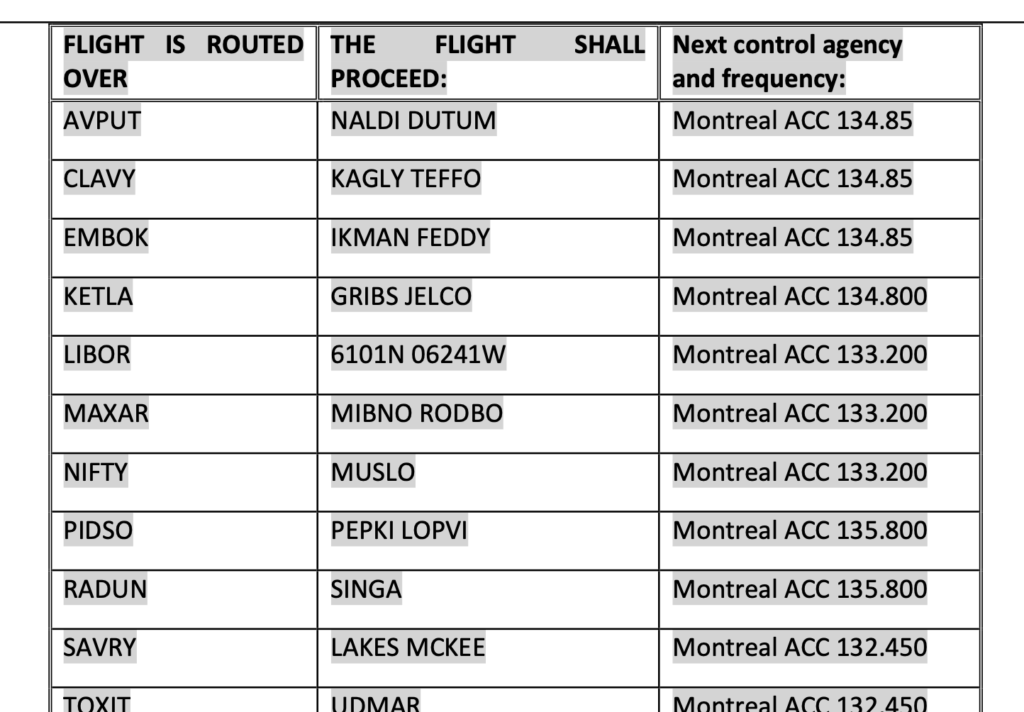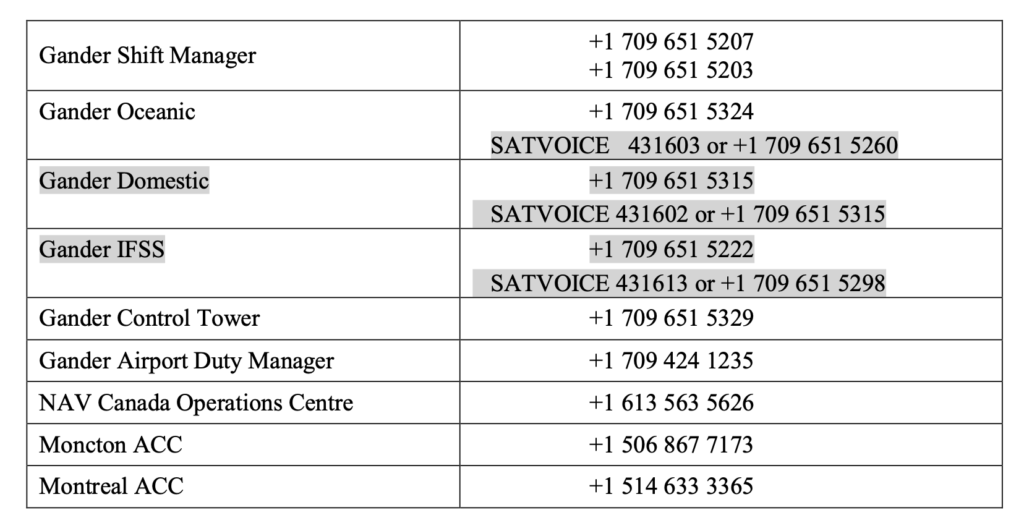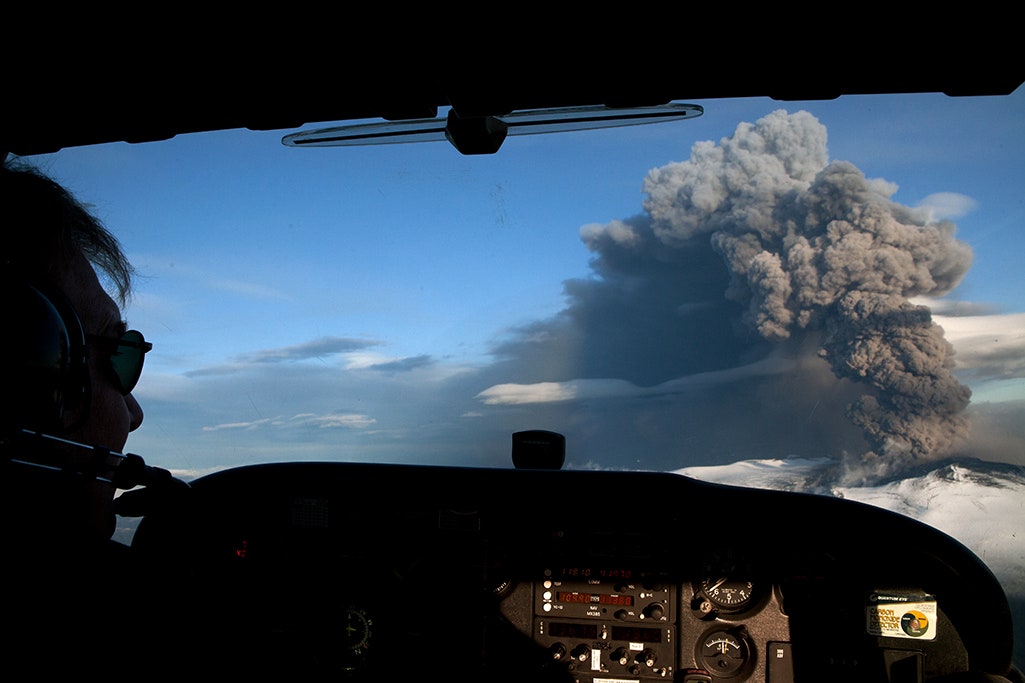ICAO have published an updated NAT Doc 006, effective Feb 2021.
This document details what happens on the North Atlantic when ATC goes down for any reason. It’s the official go-to manual to check the Contingency Plan they put in place during these so-called “ATC Zero” events.
In particular these include the contingency arrangements in place to deal with:
- The airspace suffering contamination by volcanic ash.
- The steps taken to deal with a mass turnback of traffic over the NAT region.
You can download a pdf of the new NAT Doc 006 here.
And you can get the little explainer doc here.
Summary of what’s changed:
- They have updated the section talking about contingency plans for the Gander Oceanic FIR. There is basically some updated contact info, updated contingency routes in the event of Gander Evacuations, and some wording changes clarifying the procedures to be used in event of a comms disruption or full loss of ground-air comms capability.
- The plan only applies to Gander Oceanic FIR, and has removed the ADS-B designated airspace over Greenland because Gander no longer provide ground based ADS-B separation.
Here’s a breakdown of each of the big changes, in chronological order (i.e. following the order they appear in the NAT Doc 006 guidance doc!):
The Disruption of ground/air comms capability section was updated:
Shanwick Oceanic FIR and Reykjavik Oceanic FIR provide supporting procedures for Gander. So if there is a general disruption of ground/air comms capability in Gander, comms services will be maintained using available equipment and will be supplemented with the assistance of adjacent facilities. HF normally provided by the CYQX International Flight Service Station will be delegated to other International Stations and the frequencies will be published in a NOTAM.
They then corrected the misspelling of the word ‘dependent’ about 50 times:
Ok, maybe only about 6 times.
The ‘No Service Procedure’ was updated:
If Gander ACC is evacuated, Shanwick will take over the ATC provision in the Oceanic bit as much as they can. They won’t issue re-clearances to aircraft in Gander Oceanic though. Moncton and Montreal ACC will take on the en-route ATC provision in Gander FIR.
Contact Info updated:

Pilot/Operator Procedures were updated:
If you have a clearance already, and are routing in from another OCA, then in you go and follow the clearance.
This is what it says –
“While flights with an acknowledged oceanic clearance may transit Gander’s oceanic airspace, flights not yet within Gander OCA are strongly advised not to enter the airspace. Flights operating with an acknowledged oceanic/ATC clearance that continue under pilot’s discretion are expected to proceed in accordance with the last oceanic/ATC clearance issued. En-route requests for changes to route, level or speed should be limited to those required for flight safety.”
It has removed the bit about flights in other OCAs expecting a big re-route, and how Reykavik and Santa Maria will advise on procedures. The Procedures will be as per the Notam issued and the paragraph above gives the procedure.
East and Westbound flights above FL290 contingency routes have been updated:
The change is that instead of just extending the OTS system to begin at fixes on the boundary between Gander and the Moncton or Montreal FIR, they will now use laterally spaced routes instead and connect them to oceanic exit points in the next agency. Once comms are established with the next agency, you’ll get a re-clearance.
There are a bunch of updated route tables (like this one below). So if you’re initially routing west via AVPUT and Gander evacuate, you will then proceed to NALDI, DUTUM and talk to Montreal for what to do after.

The long term contingency plan changed a bit:
Basically they clarified notes on how evacuations and loss of the Gander ATC service will likely not exceed 48-72 hours. They will also attempt to provide immediate or near immediate resumption of service specially for emergency, humanitarian and critical military flights. Everyone else can expect a “phased approach with flow control.”
Even more contact info was added:

The emergency NOTAM format has been updated:
Everyone loves a big long Notam. Here’s the new one they’ll be using from now on if everything suddenly stops working:
DUE TO EMERGENCY EVACUATION OF [OACC] DUE [REASON, e.g. COVID19] AIR TRAFFIC CONTROL SERVICES ARE UNAVAILABLE IN THE [NAME] OCA. FLIGHTS NOT IN RECEIPT OF AN OCEANIC CLEARANCE SHOULD REQUEST CLEARANCE TO AVOID [NAME] OAC/FIR OR LAND AT AN APPROPRIATE AERODROME. ONLY FLIGHTS OPERATING WITH AN ACKNOWLEDGED OCEANIC/ATC CLEARANCE ARE PERMITTED TO OPERATE WITHIN [NAME] OCA. FLIGHTS NOT YET OPERATING WITHIN THE [AIRSPACE NAME] OCA BUT IN RECEIPT OF AN [OCEANIC] OR [ATC] CLEARANCE ARE STRONGLY ADVISED NOT TO ENTER THE AIRSPACE. FLIGHTS OPERATING WITH AN ACKNOWLEDGED OCEANIC/ATC CLEARANCE THAT CONTINUE UNDER PILOTS DISCRETION ARE EXPECTED TO PROCEED IN ACCORDANCE WITH THE LAST OCEANIC/ATC CLEARANCE ISSUED AND MUST CONTACT NEXT ATC AGENCY AS SOON AS POSSIBLE AND REPORT CURRENT POSITION, CLEARED FLIGHT LEVEL, NEXT POSITION AND ESTIMATE, AND SUBSEQUENT POSITION(S). FLIGHTS MUST REVERT TO VOICE POSITION REPORTING PROCEDURES. DATALINK EQUIPPED AIRCRAFT ARE EXPECTED TO CONNECT TO/REMAIN CONNECTED TO CURRENT CENTRE UNTIL OTHERWISE INSTRUCTED. FLIGHTS MUST MONITOR 121.5 / 123.45MHZ AND VOLMET AND USE ALL AVAILABLE MEANS TO DETECT ANY CONFLICTING TRAFFIC. FURTHER DETAILS WILL BE PROVIDED VIA NOTAM IN DUE COURSE.
Anything we missed?
Let us know. news@ops.group
More on the topic:
- More: What’s Changing on the North Atlantic
- More: Timeline of North Atlantic Changes
- More: Blue Spruce Routes Are Gone (But You Can Still Fly Them)
- More: Updated FAA Oceanic Guides
- More: NAT Airspace Closures: Formidable Shield 2025
More reading:
- Latest: Venezuela & Caribbean Airspace Update
- Latest: ReFuelEU: Europe’s new anti-tankering rules explained
- Latest: US CBP biometrics: BizAv rollout still unclear
- Safe Airspace: Risk Database
- Weekly Ops Bulletin: Subscribe
- Membership plans: Why join OPSGROUP?











 Get the famous weekly
Get the famous weekly 





